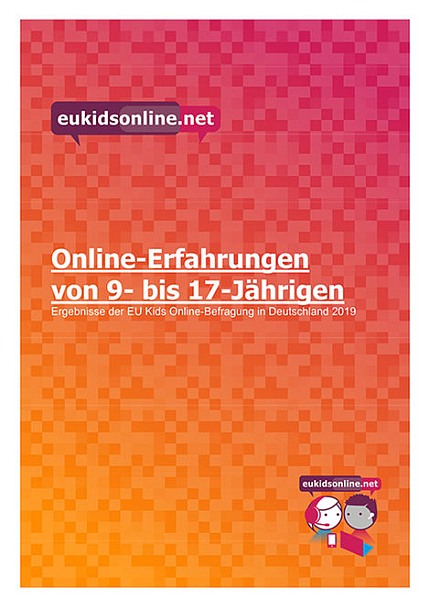EU Kids Online Survey: Growing up online - risk or fun?
Three-quarters of 12- to 14-year-olds and 90 percent of 15- to 17-year-olds in Germany are regularly online with their smartphones. On average, adolescents spend up to three hours a day online.
Children have a different understanding of risk when it comes to sexual content
Parents often worry about their children's online use. At the same time, many underestimate the frequency with which their children have certain experiences online. Particularly with regard to contact with sexual content online, parents' assessments differ significantly from their children's actual experiences. 54 percent of the 12- to 17-year-olds surveyed said they had come into contact with sexual images in the form of texts, photos or videos in the past twelve months - mostly via the Internet. 37 percent of them have even specifically selected these. What parents perceive as a risk often seems not to be bad at all for the adolescents, but attractive: 61 percent of the boys find sexual content appealing.
"Children have a different understanding of risk than adults in some respects. While parents worry, for example, that their child will come into contact with sexual content, the results show that this content does not have to be negative per se, but can sometimes also fulfill an information or orientation function for adolescents as part of their sexual development," says Prof. Dr. Uwe Hasebrink, Director of the Leibniz Institute for Media Research | Hans Bredow Institute.
Parents carelessly share children's photos on the web
There are also different opinions regarding the unsolicited publication of children's photos by parents (sharenting). Nine percent of the children aged 9 to 17 surveyed reported that their parents had posted texts, pictures or videos of them on the Internet without their consent. In each case, six percent were annoyed by the published information or asked their parents to delete it again. So even the adults themselves do not always seem to be aware of the effects of their sometimes equally intensive online activities.
"The results also give indications that a lack of awareness of the consequences of one's own media actions can lead to risks for others. This also applies to parents: Not all adolescents, for example, approve of their parents publishing and distributing unsolicited pictures of them online. It would be necessary to raise awareness here, also with regard to children's rights," says Hasebrink.
Target group and risk-specific approaches required
The results show that it is not possible to speak of THE online use and THE online experiences. Depending on their age-related developmental phase and gender-specific preferences, and in some cases also on their family background, children and young people develop very specific patterns of interaction with online media. "Children are confronted with different risks depending on their usage behavior and need a set of different media competencies and coping strategies that they can use flexibly and that help them to exploit the potential of the Internet and meet challenges online with confidence," Hasebrink concludes.
Information on the study
For the representative study, the Leibniz Institute for Media Research | Hans Bredow Institute (HBI)asked 1,044 children and young people aged 9 to 17, as well as parents, about their online experiences. The institute is part of the international research network EU Kids online. The study was supported by UNICEF as well as the Deutsche Telekom Stiftung, the Lower Saxony State Media Authority (NLM) and the Medienpädagogischer Forschungsverbund Südwest (mpfs).

